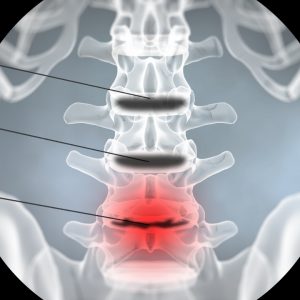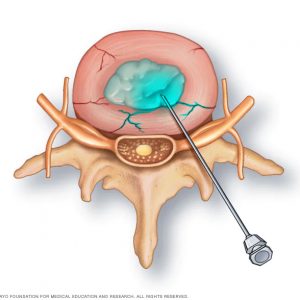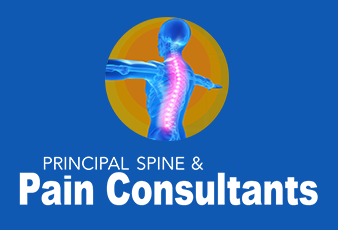
Discography
A discography, also referred to as a discogram, is an imaging test that analyzes pain in a patient’s back. Discograms set the stage for a doctor to gauge if there is an abnormal disk within the spine that is the root cause of pain.
A dye is transmitted into the middle portion of one or several disks during the discography. This injection replicates the back pain, moving into cracks within the exterior of the disk for easy viewing with a CT scan or x-ray. Disks with indications of wear and tear are not guaranteed to be symptomatic. However, the discography still helps in evaluating the patient’s back pain.
The discography is conducted within a hospital room or clinic where imaging equipment is available. This test typically takes half an hour to an hour yet has the potential to last upwards of three hours. The number of disks tested ultimately determines the length of the discography. The doctor will consider providing a sedative transmitted through the vein to promote relaxation. An antibiotic might also be provided to reduce the chances of infection.
The patient is positioned on his or her side or abdomen during the discography procedure. The skin is cleaned prior to the injection of a numbing medication to reduce pain stemming from the use of a discogram needle. A fluoroscopy imaging technique is used to observe the needle as it is inserted into the patient’s body, maximizing patient safety, and providing the doctor with a clear view of the disks.
Benefits of Discography
The purpose of the discography is to determine what, exactly, is causing back pain. This test is performed after physical therapy and medication are unsuccessfully used as treatment modalities. The discography is sometimes used in unison with a CT scan and an MRI to determine the true cause of back pain. Once the disk issue is accurately diagnosed, the doctor has the information necessary to provide treatment or resort to surgery.
Though the discography is safe, there is the chance that it will lead to complications. Some patients report a slight headache, an allergic reaction after the dye is transmitted, injuries to blood vessels or nerves and/or additional back pain. However, the chances of such complications are quite slim. The rewards of this analysis clearly outweigh the nominal risks.


Conditions Treated
A discography is used to assess patients who have back pain yet have not responded to nonsurgical treatment modalities. This technique provides a clear view of the disks and is also used prior to the lumbar fusion surgery. If you have pain in your back, hip, leg or groin, the doctor might recommend a discography after other diagnostic procedures and treatments have failed. The results of this analysis might reveal that surgery is necessary. However, physicians prefer to exhaust all possible nonsurgical treatment modalities before resorting to a surgical procedure.
Listen closely as the doctor goes over the results of your discography, and you will have a better understanding of exactly what is going on with your back. This in-depth analysis also helps determine the best approach for pain mitigation moving forward.
Contact Us
If you believe you could benefit from an occipital nerve block, come visit the experts at Principal Spine today. Our pain management doctors are accepting new patients to schedule and appointment, please call our Carrollton clinic at (972) 316-7270 or our Denton clinic at (940) 222-8943.

